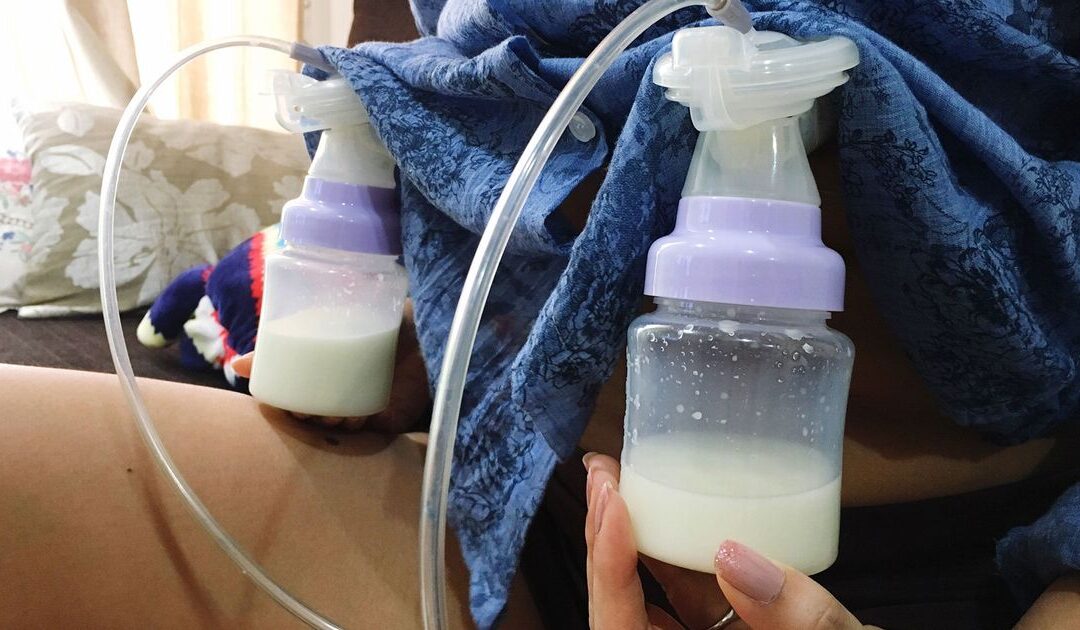Breast milk pumping is a vital practice for mothers who need to be away from their baby or wish to combine breastfeeding with bottle feeding. Whether returning to work, dealing with breastfeeding challenges, or simply needing flexibility, pumping allows mothers to continue providing the essential nutrients breast milk offers. Here’s a detailed guide to help you navigate breast pumping.
1. Choosing the Right Pump
There are several types of breast pumps, and choosing the right one depends on your lifestyle and needs. The most common types include:
- Manual Pumps: Operated by hand, these are ideal for occasional pumping. They’re affordable and portable but require more effort.
- Electric Pumps: These come in single or double varieties. Double pumps are efficient for frequent use, as they express milk from both breasts simultaneously, reducing pumping time.
- Hands-Free Pumps: These are worn inside your bra, providing convenience for busy mothers who want to pump while performing other tasks.
Many healthcare systems and insurance providers may offer breast pumps, sometimes even for free, based on individual needs.
2. Setting Up for Pumping
Before starting, cleanliness is crucial. Wash your hands and ensure that all pump parts that touch the milk or your skin are sanitized. Regular cleaning prevents infections like mastitis, which can arise from improper hygiene.
Position the breast shield properly over your nipple, ensuring it fits snugly but without pressing too hard on the breast tissue. Adjust the suction settings according to your comfort level. Start with low suction and a faster speed to simulate a baby’s initial quick sucking, then slow down and increase suction as the milk begins to flow.
3. When and How Long to Pump
It’s essential to establish a regular pumping schedule. Here are some key timings:
- For Working Mothers: Start pumping about three weeks before returning to work to build up a milk supply. At work, aim to pump every 3 hours or as frequently as your baby feeds. This helps maintain your milk supply.
- Exclusively Pumping: If you’re not breastfeeding directly, pump as often as your baby would feed, typically every 2-3 hours, including during the night if necessary to maintain supply.
- Length of Each Session: Each pumping session should last 15-30 minutes. Continue pumping until your breasts feel empty and soft. If you notice a slowdown in milk flow after a let-down, keep going for a couple of minutes to ensure maximum milk expression.
4. Maximizing Milk Production
Several factors influence how much milk you can pump:
- Relaxation: Being comfortable and relaxed is key to a good pumping session. Try pumping in a quiet, private space, and use techniques like deep breathing, listening to calming music, or visualizing your baby to stimulate the hormone oxytocin, which aids milk flow.
- Massage and Warm Compresses: Massaging your breasts before and during pumping can increase milk flow. Some mothers find applying a warm compress to their breasts before starting the session helps stimulate milk let-down.
5. Storage and Handling of Expressed Milk
Proper handling of breast milk ensures its safety for your baby. Store freshly pumped milk in clean bottles or milk storage bags. Label them with the date and time of expression. Breast milk can be stored:
- At room temperature for up to 4 hours.
- In the refrigerator for up to 4 days.
- In the freezer for up to 6 months (though using it within 3 months is ideal).
Once thawed, breast milk should not be refrozen and should be used within 24 hours. It’s also important to note that shaking breast milk can break down the proteins, so swirl the milk gently instead.
6. Challenges and Solutions
Pumping isn’t always smooth sailing, and some mothers face challenges:
- Sore Nipples: If pumping is painful, check the flange size or reduce the suction. Pain might indicate that the pump is set too high, or the flange may not be the correct size.
- Milk Supply Issues: If your supply dips, increase the frequency of pumping and ensure you’re staying hydrated and well-nourished. Power-pumping sessions (pumping more frequently for short bursts) can help boost supply.
- Engorgement: Overly full breasts can become painful. Pumping between feeds or from the opposite breast during nursing sessions can help prevent this.
7. Pumping at Work: Tips for Success
Returning to work after maternity leave presents its own set of challenges. Discuss with your employer about having a private, comfortable space for pumping. Ideally, this should be a quiet room with a chair, table, and power outlet for your pump. Keep in mind that regular pumping breaks, about every 3 hours, are crucial to maintaining your supply. Store the milk in a cooler bag or office fridge, and transport it home in properly sealed containers.
8. Combination Feeding
Combining breastfeeding with pumping can offer the best of both worlds, allowing you to maintain flexibility without sacrificing the benefits of breast milk. To start, pump between nursing sessions or after feedings to build a supply. When introducing a bottle to your baby, have someone else feed the baby first, as the baby might associate your presence with direct breastfeeding.
Final Thoughts
Breast pumping, while sometimes challenging, provides many benefits for both mother and baby, offering flexibility, continued breastfeeding benefits, and the opportunity to share feeding responsibilities with others. By establishing a routine, ensuring cleanliness, and maintaining comfort, mothers can successfully pump and provide breast milk for their babies. For mothers facing difficulties, lactation consultants and healthcare providers can offer valuable advice.
Breast pumping is a journey unique to each mother. With the right tools and knowledge, this process can help meet your baby’s nutritional needs while supporting your lifestyle
